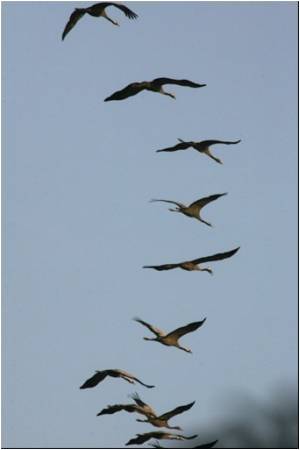
Experiments with pigeons have shown that it helps birds ascend slopes and suggests the earliest flightless birds might have used the same technique, reports the BBC.
Co-researcher Ken Dial noticed this behaviour when filming a type of partridge known as a chuckar.
As the rotund birds negotiated obstacles, they would run up the objects flapping their wings.
When Dial discussed this behaviour with local ranchers and hunters, some reported that adult chukars would flap to run up cliffs, rather than fly.
Jackson and his team decided to find out if the birds might be using the technique to save energy by measuring the amount of power generated by the flight muscles when birds flew and when they were flap-running.
Advertisement
The electrodes measured muscle activity in the birds as they flapped and ran up ramps of varying inclines, and as they flew parallel to those same ramps.
Advertisement
Running up that ramp, explained Jackson, 'required about 10 percent as much power from the flight muscles' as flying.
"The signal was imperceptible at first, and we actually thought we had a problem with the recording equipment. But when we zoomed in, there it was, about a tenth the magnitude that it was during flight," Jackson told BBC Nature.
"The birds seemed to be using hardly any power to flap their wings as they ran up the slopes," he added.
The study is published in the Journal of Experimental Biology.
Source-ANI








